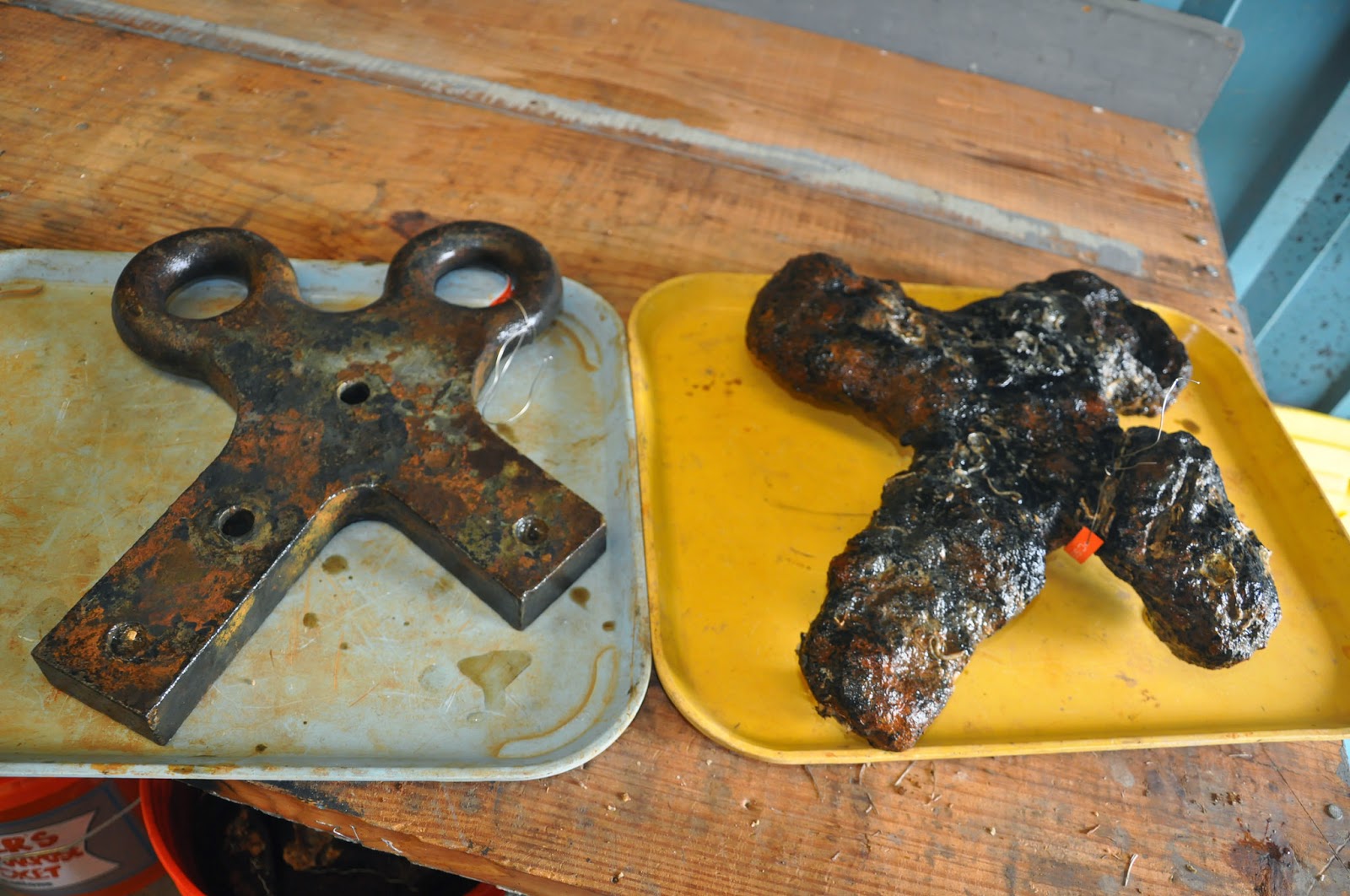 |
| Stand of artillery grapeshot with cap (All photos U.S. Army Corps of Engineers) |
While TV
cameras and the public may be more interested when the big stuff – cannon, the propeller
and pieces of casemate – are lifted from the Savannah River, it may be the
smaller items currently being carried up by divers that tell the bigger story
about the operation and crew life on the Confederate ironclad CSS Georgia.
“The
artifacts have just been more fascinating than I would have expected, and I
think they are telling a better story than what people realized at first,” said
Russell Wicke, a spokesman for the U.S. Army Corps of Engineers office in the
Georgia city.
More than
1,000 artifacts have been recovered so far from the 1864 wreck site. The
underpowered CSS Georgia ended up serving as a defensive floating battery off
Fort Jackson, just east of the historic waterfront. It was scuttled hours before Union forces took Savannah.
The dive area
is about 150 feet by 250 feet. Visibility is near nil. Interestingly, pieces of
pottery that pre-date the Civil War have been recovered from the debris field.
The current
dives will continue into June, when a Navy barge and crane arrive on scene to
begin the heavy lifting.
Wicke this
week gave the Picket an overview of some of the items divers recovered in
April.
Misbehave? Watch out for the leg irons
Divers have recovered two sets of these contraptions, intended either for prisoners or crew members that were in trouble or prone to desert. The image in the center is an X-ray and the one at right an epoxy mold that can be referred to while the actual artifact undergoes extensive conservation.
Remnants of a bayonet hilt
According to a Corps article, the P.S. Justice rifle bayonet, model 1861, type II, was not of the highest quality. The company was based in Philadelphia.
Eyes for tackle from pivot gun
carriage
These shaped
pieces of brass (left) and iron were part of the rope and wood assembly used to
aim and direct fire (though the ironclad never fired a combat shot). Wicke said
research by Texas A&M University showed the cannon were not fixed in
position, as once believed. These eyes for tackle allowed the crew to fire the
cannon from different articles.
Grapeshot and stand
Here’s one of
the more remarkable finds. Wicke says the crew wrapped these pieces with
leather straps, which have long ago disintegrated in the river. He likens the
golfball-sized grapeshot to giant shotgun pellets – able to clear the deck. A cap was placed at the top.
Assorted fasteners and spikes
The CSS Georgia was believed
to have about 24 inches of pine and oak beneath her iron cladding. These
metal items were used to link the railroad track armor to the protective wood
and other components of the vessel. Many of these pieces are covered in
concretion, the result of sand and shell forming sediment. Wood used on the ironclad is now largely “mush,” said Wicke, because of ravenous worms.
Rear gun sight
Jim Jobling, a project
manager with Texas A&M’s Conservation Research Laboratory, looks over a sight
for a 32-pound rifled cannon on the CSS Georgia. He noticed the faint presence
of a serial number.
Ever hear of a sabot?
This small metal disc was at
the back end of artillery shells and helped in the rifling process, says Wicke.







No comments:
Post a Comment